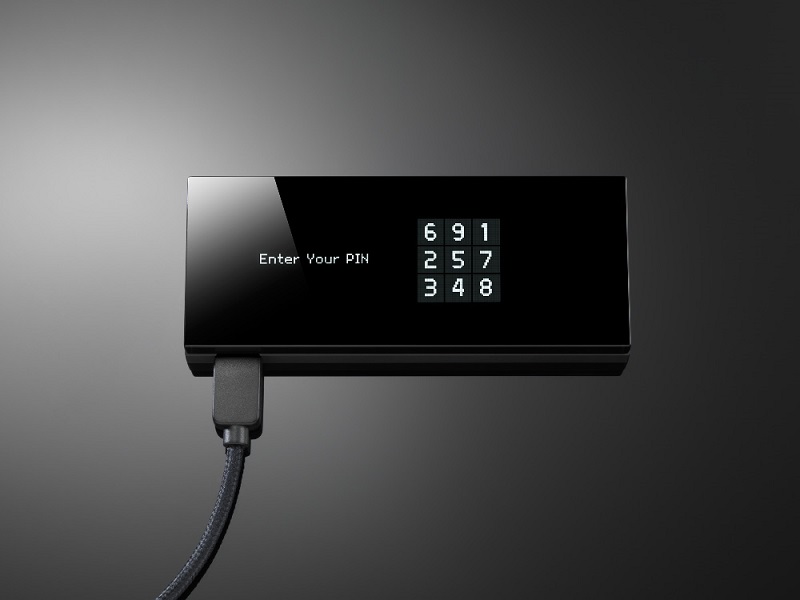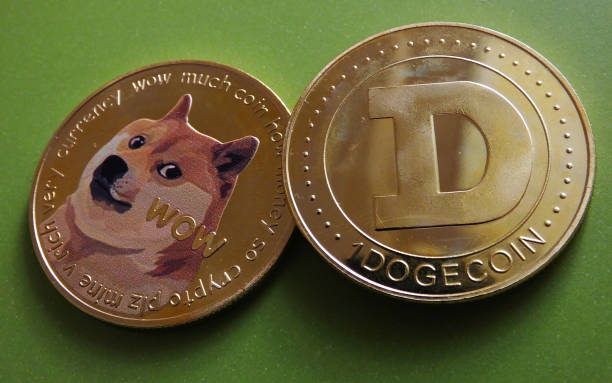Simple design, sleek look and security measures any hardware wallet user could want to store Bitcoin or any digital asset.
Disclaimer: This article was provided by The Vanbex Group. Bitcoinist is not affiliated with the firms represented by the Vanbex group and is not responsible for their products and/or services.
 Meet the KeepKey, a device that offers a clean 3.12” OLED screen with a polycarbonate front encased in anodized aluminum. The device comes packaged with a durable woven nylon USB cable, a backup card to jot down your recovery sentence mnemonic and a leather sleeve.
Meet the KeepKey, a device that offers a clean 3.12” OLED screen with a polycarbonate front encased in anodized aluminum. The device comes packaged with a durable woven nylon USB cable, a backup card to jot down your recovery sentence mnemonic and a leather sleeve.
The micro-controller, initialization and recovery methods used by the KeepKey are also distinctive features within the hardware wallet ecosystem.
When packaged with its engineered enclosure and inner framing, crisp styling and simple function, the KeepKey is a top-level device that stands apart from its counterparts.
But first a little background into hardware wallets.
Hardware, huh …?
Let’s dive into some basics for newcomers to the hardware wallet ecosystem. A hardware wallet, in the Bitcoin and alternative digital currency dominion, is a device that stores a part of a user’s wallet (i.e. their Bitcoin or alternative) securely, in a mostly-offline, device.
They have key advantages over other wallet types such as desktop and online-only variations, as described in the online Bitcoin Wiki:
- The user’s key is often stored in a protected area of a microcontroller and cannot be transferred out of the device in plaintext.
- They are immune to computer viruses that steal from software wallets
- They can be used securely and interactively, as opposed to a paper wallet which must be imported to software at some point.
- Much of the time, the software is open source, allowing users to validate the entire operation of the device.
The KeepKey, as a hardware wallet, offers all of these advantages, among tasteful design and overall product quality unmatched.
Digging into the KeepKey
 The hardware wallet marketplace has quickly developed into a crowded space and with that comes variations, distinctions, consumer wants and desires, including function, design, security and more.
The hardware wallet marketplace has quickly developed into a crowded space and with that comes variations, distinctions, consumer wants and desires, including function, design, security and more.
The KeepKey’s design and framing is the first thing that strikes you. The casing is anodized which offers corrosion resistance and it makes sure the device itself is nonconductive.
Just shifting the product in-hand will also show off the spectacular finish to the metal which will glint and glimmer in the sunlight. The KeepKey certainly looks and feels polished compared to anything else currently on the market.
The enclosure and inner frame also offer durability and strength distinct from other hardware wallets. Unlike the plastic variations currently in the market, the KeepKey offers a final seal rating of 4,560 PSI to go with a rigid structure that won’t flex if you try to contort the device.
Further, the engineering involved ensures the display sits in the inner frame, a few millimeters behind the front enclosure.
Unlike other hardware wallets, the OLED component is not exposed and vulnerable to shattering if dropped and the casing itself offers greater protection than plastic.
This brings us to the screen. The KeepKey’s display (256×64) is larger than any of its competitors, offering an immensely greater degree of user friendliness and overall experience.
Being able to see the transaction and confirm exchanges on-screen is a fantastic upgrade to the design and general operation of other hardware wallets out there.
Now let’s discuss the ever-important micro-controller.
It delivers twice the amount of flash and three-times the flash read-writes than its competitors. The latter point essentially means a longer lifespan for the KeepKey as each device interaction is a read-write.
Initialization and Recovery
 Finally, KeepKey’s initialization and recovery processes standalone when it comes to ease and security.
Finally, KeepKey’s initialization and recovery processes standalone when it comes to ease and security.
Initialization with the KeepKey is no more than a handful of seconds, aided by the device’s screen size.
Bobby Ong at CoinGecko.com, stated: “I was surprised at the ease of initializing the KeepKey device.
“I have to say that among the Trezor, Ledger Nano and KeepKey, this feels like the easiest and fastest device to initialize.”
Ong was not wrong. The KeepKey is used in conjunction with a Wallet Extension and Chrome Proxy App.
The device, upon initialization, requires you to enter a PIN via a scrambled keypad on the KeepKey’s screen. You are then prompted to enter a 12-word recovery seed (which you can then copy on to the backup card and store safely).
An optional passphrase can additionally be attached initiating a two-step recovery process.
If your device is lost or stolen, you can then recover your keys via your recovery sentence and passphrase, if one was applied. You can also recover your private keys onto a new device using your recovery sentence, which is recommended.
The company states, “[the] optional passphrase can be used to encrypt your private keys, so even if the read protection feature of the micro-controller is circumvented, your private keys remain safe.”
Furthermore, your private keys are fed through a hardware-based random number generator, generated by you when you receive your KeepKey. Your keys then remain on the device, never actually leaving it.
The company also states that, “KeepKey uses a very limited protocol to communicate with the computers it is connected to. Private keys are never exposed in this protocol.”
These are significant security features that set the hardware wallet apart from desktop and online-only counterparts which are susceptible to malware and hackers.
With the KeepKey, to put it simply: you get what you pay for. If it’s a top-end, sleek, premium brand of hardware wallet to store your Bitcoin or otherwise, look no further.
Become Affiliated!
KeepKey is looking to expand its reach even further — with your help. Best of all, you get paid.
Just add a graphic or link to your site, help drive sales and cash in on percentage of that sale. It’s as easy as that.
To join the Affiliate Program go to keepkey.hasoffers.com. The validation process is seamless and simple.
For more information visit KeepKey.com.








